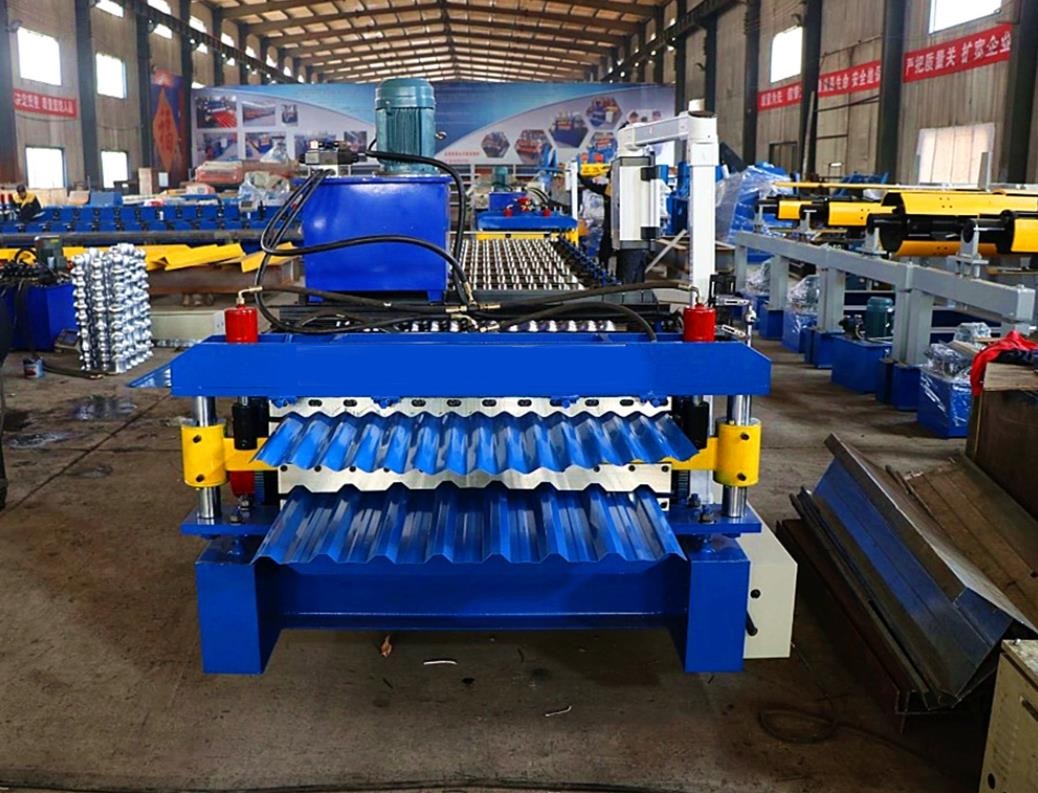roll forming line machine company
Roll Forming Line Machine Revolutionizing Manufacturing Processes
In the world of modern manufacturing, efficiency and precision are paramount. One of the technological advancements that has made significant strides in improving production line efficacy is the roll forming line machine. This innovative technology has transformed how various metal products are produced, making it an essential asset for manufacturers across diverse industries. This article explores the intricacies of roll forming lines, the benefits they bring to manufacturing, and the future of this technology.
Understanding Roll Forming
Roll forming is a continuous bending operation in which a long strip of metal is gradually formed into the desired cross-section by passing it through a series of rollers. The process starts with flat metal sheets or coils, which are fed into the machines, and as the sheets progress through various sets of rollers, they are shaped incrementally until they reach the final profile.
Roll forming is particularly favored for producing long lengths of uniform parts with high precision. Common applications include producing metal roofing sheets, structural sections, and other architectural components. The versatility of roll forming lines enables manufacturers to create complex geometries that would be difficult or impossible to achieve with traditional fabrication methods.
Key Components of Roll Forming Line Machines
A typical roll forming line machine comprises several vital components
1. Decoiler This component feeds the metal coil into the machine. It unwinds the coil and maintains a steady tension to ensure smooth feeding.
2. Forming Station This is the heart of the roll forming line. It consists of a series of rollers arranged in a specific formation to shape the metal into the desired profile gradually.
3. Cutting Station At this stage, the formed metal is cut to the required lengths. The cutting can be done through various methods, including flying cut-off and stationary cutting, depending on the production requirements.
4. Stacker or Collector This part of the machine collects and stacks the finished products for easy handling and storage.
Each component plays a significant role in ensuring that the process runs smoothly, efficiently, and accurately.
roll forming line machine company

Benefits of Roll Forming Line Machines
The adoption of roll forming technology offers several advantages to manufacturers
1. High Production Speed Roll forming lines are capable of producing parts at high speeds, significantly reducing production time compared to other forming techniques. This is essential for meeting market demands quickly.
2. Material Efficiency The process typically results in minimal waste. The ability to achieve high precision in forming means that less material is lost during production, leading to cost savings.
3. Consistency and Quality The automated nature of roll forming ensures that every piece produced maintains the same dimensions and quality, which is vital for applications that require strict tolerances.
4. Flexibility Modern roll forming machines can quickly adapt to produce different profiles and designs with minimal downtime. Manufacturers can easily switch production based on changing market demands or customer preferences.
5. Reduced Labor Costs Automating the roll forming process reduces the need for manual labor, leading to lower operational costs and a safer working environment.
The Future of Roll Forming Technology
As industries continue to evolve, so too does the roll forming technology. With the integration of advanced technologies such as Industry 4.0, artificial intelligence, and IoT (Internet of Things), the future of roll forming lines appears promising. These innovations may enable manufacturers to optimize their operations further, improve predictive maintenance, and enhance product quality through real-time monitoring.
Moreover, as sustainability becomes a critical focus for businesses, roll forming technology can contribute to greener manufacturing processes. By utilizing recyclable materials and minimizing waste, manufacturers can position themselves as environmentally conscious entities.
Conclusion
In conclusion, roll forming line machines represent a significant leap forward in the manufacturing sector, offering numerous advantages in speed, efficiency, and quality. As technology continues to advance, roll forming is poised to become even more integral to production processes, allowing manufacturers to meet the challenges of modern markets while also focusing on sustainability. The adaptability and innovation embedded in roll forming lines will undoubtedly play a crucial role in shaping the future of manufacturing.
-
Roof Panel Machines: Buying Guide, Types, and PricingNewsJul.04, 2025
-
Purlin Machines: Types, Features, and Pricing GuideNewsJul.04, 2025
-
Metal Embossing Machines: Types, Applications, and Buying GuideNewsJul.04, 2025
-
Gutter Machines: Features, Types, and Cost BreakdownNewsJul.04, 2025
-
Cut to Length Line: Overview, Equipment, and Buying GuideNewsJul.04, 2025
-
Auto Stacker: Features, Applications, and Cost BreakdownNewsJul.04, 2025
-
Top Drywall Profile Machine Models for SaleNewsJun.05, 2025








